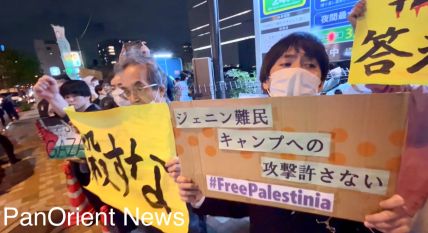|
|
Environment
Gaps in Japanese Seafood Contamination Monitoring: Greenpeace
Thursday, October 20, 2011

Tokyo- (PanOrient News) Greenpeace today urged the Japanese government to strengthen its food screening and labeling system, after the environmental organization’s new radiation screening station discovered cesium 134 and 137 in seafood samples from five major supermarket chains around Japan.
Fish and shellfish samples were purchased by Greenpeace between September 4 and October 7 from the Aeon, Ito-Yokado, Uny (Apita), Daiei, and Seiyu supermarket chains in Tokyo, Kanagawa, Chiba, Saitama, Ibaraki, Fukushima, and Miyagi.
All samples were sent to the Food and Ecology Institute of Japan for third party screening using a germanium detector. Greenpeace said. 34 out of the 60 samples tested at the lab exhibited contamination levels of up to 88 becquerel per kg. Following Chernobyl, the Ukrainian limit remains 150 becquerel per kg.
“While the samples are well below the 500 becquerel per kg limit set by the authorities, the contaminated seafood still represents a health risk, especially to pregnant women and children, and it is being distributed over a wide area,” said Wakao Hanoaka, Greenpeace Japan oceans campaigner. “More concerning, however, is that there is no labeling that notifies consumers if the seafood had been screened, making it impossible for them to make informed decisions.”
Greenpeace has submitted formal requests to the Consumer Affairs Agency, the Ministry of Agriculture, Forestry, and Fisheries, the Ministry of Health, and the Japan Chain Stores Association asking that seafood product screening and labeling be significantly improved.
“The government has dragged its feet through every stage of the Fukushima Daiichi nuclear disaster response effort, and looking at its inadequate food screening processes this is clearly still happening,” said Hanaoka.
“Japanese consumers have legitimate concerns about the food they buy. One supermarket has taken positive action and implemented its own monitoring, however, comprehensive, consistent government screening and labeling is essential to protect public health, restore confidence in the food system, and help the fishing industry recover.”
Calles are mounting on the Japanese government to set government standards on radiation decontamination measures following a spate of discoveries of radiation "hot spots" in the Tokyo metropolitan area.
Tokyo's Adachi Ward detected a level of radiation of 3.99 microsieverts per hour next to the machinery room of an elementary school pool on Oct. 17, following measurements taken independently by a resident. However, the government has not yet provided any clear guidelines relating to decontamination work, Japanese media reported.
On October 18, Tokyo metropolitan government said that three samples of green tea produced in Tokyo have been found to contain radioactive cesium exceeding the legal limit of 500 becquerels per kilogram.
The Ministry of Education, Culture, Sports, Science and Technology said it is currently working on guidelines for radiation measurement and decontamination.
PanOrient News
© PanOrient News All Rights Reserved.
|
|

